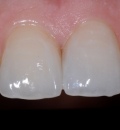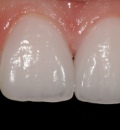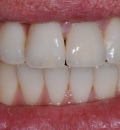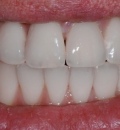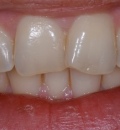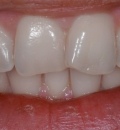Tooth bleaching
.jpg)
The smile is the most prominent feature of the face. Sadly, over time the teeth lose their natural luster.
Tooth bleaching is the most popular cosmetic dental treatment.
Tooth bleaching methods
- ZOOM system
- In-office bleaching
- At-home bleaching (using mouthguards)
- Bleaching of single teeth
Bleaching using laser and halogen light methods of tooth bleaching are the safest and most effective. The difference is that the bleaching gel is activated using light of different sources and wavelengths. Laser bleaching systems use a laser diode, the ZOOM system - a halogen light.
ZOOM tooth bleaching system is a modern research-based procedure. It is safe, effective and fast. It’s an ideal solution for those seeking fast and noticeable results. The procedure is simple. A ZOOM light is used to activate the ZOOM gel on the teeth. The active ingredient of the gel is hydrogen peroxide, which upon activation splits into water and an oxygen atom. During the oxidation reaction the organic pigments are removed and the teeth become brighter.
In-office tooth bleaching takes about an hour. During this procedure bleaching agent is applied on the teeth and activated using a light source. For maximum effect, 2-3 procedures are recommended. This bleaching method is very effective to restore results of a previous procedure.

At-home bleaching
For bleaching at-home the patient uses custom mouthguards. They are filled with bleaching gel and applied on the teeth. Bleaching mouthguards are worn for 2 hours a day or more depending on the concentration of the bleaching gel. This bleaching method takes 1-2 weeks.

Bleaching of single endodontically treated teeth At Neodenta clinic single non-vital teeth are also bleached. They are bleached from the inside using a special bleaching agent. It must be noted that because non-vital teeth often change their color, they are bleached every 2 years.
Patients with exceptionally sensitive teeth are treated under local anesthesia. The teeth might be slightly more sensitive, but the sensitivity returns to normal after 1-2 days. It is important to remember that fillings, crowns and other dental restorations do not change color, so restorative treament should be planned after bleaching to match the shade of the bleached teeth. Tooth discoloration is also caused by smoking, coffee, tea, red wine, antibiotics and tooth and gum diseases. Therefore in some cases the procedure needs to be repeated several times.








